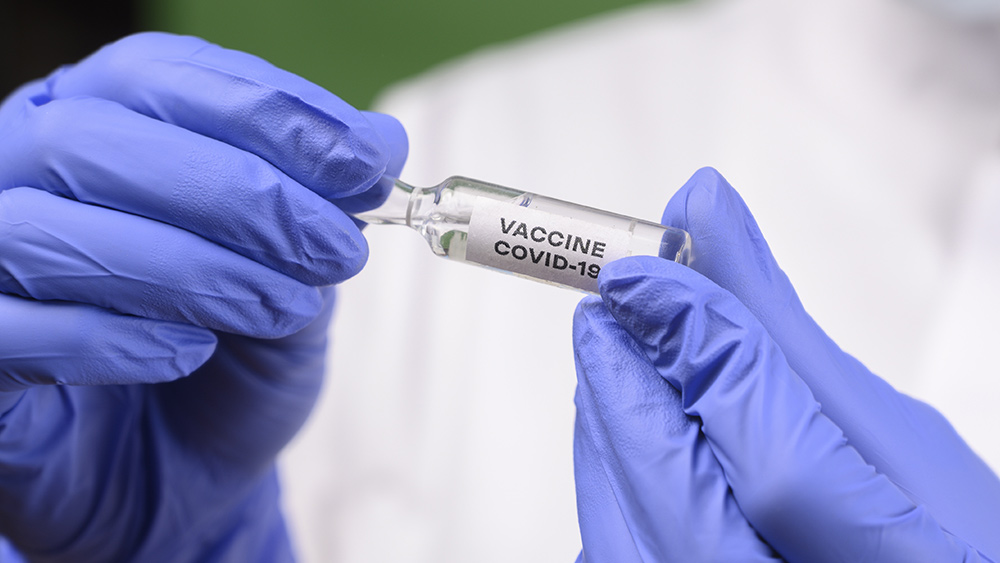Fucoidan, found in brown algae, found to prevent the progression of osteoarthritis
12/13/2018 / By Ellaine Castillo

A study conducted by researchers from Kyung Hee University, Korea Food Research Institute, and Academy Sciences of Uzbekistan has revealed that the polysaccharide fucoidan found in brown algae (Hizikia fusiforme) has potential use as an alternative remedy for osteoarthritis (OA). This finding was determined through an in vivo study conducted in rats.
There are more than 100 types of arthritis with all of them having one thing in common, which is the inflammation of the joints. Among the different forms of this condition, the most common one is osteoarthritis, also called the “wear-and-tear” arthritis. The Centers for Disease Control and Prevention estimate that over 30 million adults in the U.S. suffer from this form of arthritis, which commonly affects the hands, fingertips, knees, hips, or spine. The high incidence of osteoarthritis can be attributed to the increasing number of obese individuals and the elderly.
Osteoarthritis occurs when the cartilage that serves as the cushion between joints breaks down, allowing for direct contact between the bones. This condition can progress through five stages from 0, which represents the normal joints, to the most severe stage 4 where there is an extensive or complete loss of cartilage. Patients with the latter stages of osteoarthritis experience symptoms like joint swelling, increased pain, locking or buckling of joints, muscle weakness, and joint deformity that can interfere with their daily activities. Fortunately, it is possible to prevent osteoarthritis progression with proper maintenance and preventive measures.

In this study, which was published in the Journal of Medicinal Food, the researchers extracted fucoidan from brown algae and tested them in male Sprague-Dawley rats with monosodium iodoacetate (MIA)-induced osteoarthritis. Overall, there were 40 rats used in the experiment. These were divided into five groups, with one group serving as the normal model and the rest having MIA-induced osteoarthritis. The groups with osteoarthritis received one of the following treatments for 14 days: conventional osteoarthritis medication (Lyprinol), 50 mg/kg fucoidan, 100 mg/kg fucoidan, or no treatment.
To determine the therapeutic potential of fucoidan, the authors analyzed joint histology and pro-inflammatory cytokine levels in the serum. For the latter, they specifically looked at the concentration of tumor necrosis factor-alpha (TNF-alpha), interleukin 1-beta (IL-1-beta), and matrix metalloproteinase-1 (MMP-1). The results showed that MIA successfully induced osteoarthritis, as exhibited by severe bone loss, cartilage degeneration, and high levels of pro-inflammatory chemicals in the negative control. However, the groups that were treated with fucoidan had few to no problems with their bones and cartilage. Moreover, they also had lower levels of pro-inflammatory cytokines.
The results of this study show that fucoidan alleviates the symptoms of osteoarthritis and it also prevents the potential progression of this condition.
Other health benefits of fucoidan
There are many other health benefits that you can enjoy from fucoidan. These include the following:
- Fucoidan reduces cancer risk — The search for safe and effective cancer treatments continues until now, and fucoidan is one of the natural products being considered for this purpose. It works by triggering programmed cancer cell death and preventing vascular tissue formation since this can enhance tumor growth. (Related: Compound found in brown algae and sea cucumber found to inhibit formation of skin cancer and promote cancer cell death.)
- Fucoidan helps you live longer — Fucoidan activates an enzyme called sirtuin-6 that is involved in cellular processes important for healthy aging. This enzyme regulates genome stability, oxidative, stress, and glucose metabolism, making it a promising target for age-related diseases.
- Fucoidan promotes blood circulation — This polysaccharide reduces the risk of health conditions like stroke, heart attack, and deep vein thrombosis by making sure that the blood is thin enough to pass through the blood vessels. It possesses this ability because it shares the same sulfated structure as the conventional blood-thinning medication called heparin.
For more articles about natural remedies for osteoarthritis, visit NaturalCures.news.
Sources include:
QuantumWellnessBotanicalInstitute.com
Submit a correction >>
Tagged Under:
anti-inflammatory, arthritis, brown algae, brown seaweed, cartilage, fucoidan, Hizikia fusiforme, inflammation, joints, natural medicine, natural remedies, Osteoarthritis, polysaccharide, supplements
This article may contain statements that reflect the opinion of the author





















